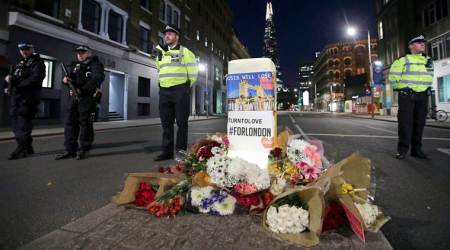 Part of the reason for Britain being able to prevent attacks between 2013 and 2017 was the success of its controversial ‘Channel’ programme under the counter-terrorist policy known as ‘CONTEST’, originally unveiled in 2003 and amended later. (Source: Reuters)
Part of the reason for Britain being able to prevent attacks between 2013 and 2017 was the success of its controversial ‘Channel’ programme under the counter-terrorist policy known as ‘CONTEST’, originally unveiled in 2003 and amended later. (Source: Reuters)
The London Bridge-Borough Market killings on June 3 have to be analysed in the background of some disturbing signs in the war on terrorism. The new challenges faced by global security agencies pertain to their frequent inability to prevent attacks by terrorists — even when they are on the radar of these agencies.
This trend was first noticed in America, when it could not prevent the November 5, 2009 “Fort Hood” killings by Major Nidal Hasan, although the FBI had monitored his contacts with hate preacher Anwar al-Awlaki in Yemen. From then on, a number of serious killings have occurred in the US, France and Belgium by radicals who were “known” to counter-terrorist (CT) agencies. The CT agencies have been accused of gross inefficiency on the one hand, while on the other hand, there is reluctance by all in strengthening their legal powers.
On March 22, Westminster was attacked by Adrian Ajao (aka Khalid Masood), who had an old criminal record. MI-5 had enquired into his alleged role in the attempted Luton bombing in 2010. Then came the Manchester concert attack on May 22, in which suicide bomber Salman Ramadan Abedi killed 22 persons. Soon after, there was a report that MI-5 was alerted thrice over Abedi’s extremist views — but it could not prevent the incident.
This led to the startling revelation that MI-5 has a list of nearly 20,000 “Islamic jihadi suspects”, of whom only 3,000 could be monitored closely. Reports said the MI-5’s system of assessing and managing risk “is coming under immense strain, given the service’s unrelenting and rising workload”. This has now led to a political slugfest during the election campaign and there are allegations that the Conservative government has risked national security by cutting police and secret service budgets.
In fact, MI-5 has been publicly conveying that the problem of surveillance was getting beyond its capability. In 2009, the then-MI-5 chief, Jonathan Evans, told the British Parliament’s Intelligence and Security Committee that they could only “hit the crocodiles nearest the boat”. In 2015, MI-5 chief Andrew Parker publicly revealed the “growing gap between the increasingly challenging threats and the availability of capabilities to address it”.
Still, Britain has had a very good record in preventing jihadi terror on its soil. There were no incidents from the 22 May, 2013 “Lee Rigby” killing till the Westminster attack in March this year. During this period, other European countries like France and Belgium were subjected to several serious incidents.
Part of the reason for Britain being able to prevent attacks between 2013 and 2017 was the success of its controversial “Channel” programme under the counter-terrorist policy known as “CONTEST”, which was originally unveiled in 2003 and amended later. This strategy has four strands called “Four Ps”: Prevent, Pursue, Protect and Prepare. “Channel” is under “Prevent”. “Counter-narratives” to respond to insidious jihadi propaganda is attempted through this.
In 2009, the scope of this programme was enlarged to include local councils, community groups, businesses, hospitals and emergency services. The Counter-terrorism and Security Act 2015 is the seventh such law in the UK since 9/11, widening the responsibility to sectors other than the police — although, in the process, the government has been blamed for using its entire machinery for “spying” on Muslims.
Strangely, the philosophical justification for this came from a person in America who was opposed to widening the surveillance powers of the security services. In his piece in The Huffington Post on May 5, 2015, Mathew Harwood of the American Civil Liberties Union (ACLU) claimed that research into 119 “lone actor” incidents in the US and Europe had found that the perpetrators often expressed their “extremist beliefs, grievances and sometimes their violent intentions to others — mostly friends and family or online communities”. He felt that this might be a way to tackle the problem, not by more intrusive surveillance.
In India, only Maharashtra has attempted to widen the responsibility of “counter narratives” to other wings of the government besides the police. This was done under the personal initiative of Chief Minister Devendra Fadnavis. It is still at a nascent stage. There is no other alternative to this if we intend to wean away our misguided youth from insidious propaganda by the Islamic State and others.
The writer is a former special secretary, Cabinet Secretariat, and member of the two-person High Level Enquiry Committee to examine the police response to the 26/11 terror attacks

